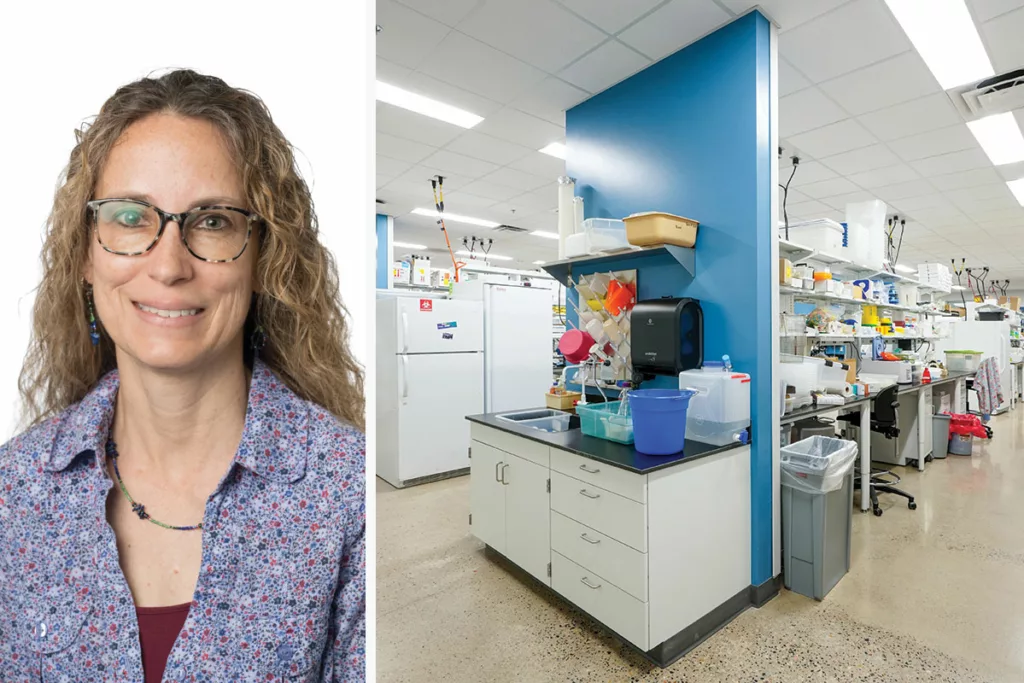Saving the world from diseases like tuberculosis can consume huge amounts of water and energy.
Dr. Karen Dobos’s lab is one of six in the Infectious Disease Research Center on CSU’s Foothills Campus studying a range of pathogens in support of vaccine development and other treatments. Shared research equipment can run all day in the quest for answers.
“The amount of water and energy used by a research lab is astronomical,” said Rebecca Staudenmaier, lab manager and research associate with the Dobos Lab. “If we can be sustainable, it lowers costs, it can leverage grants, and it’s just the right thing to do. The support of the University makes it easier.”
In 2022, Staudenmaier was among an inaugural group of students and professionals who completed a one-credit special-topics course through the Department of Microbiology, Immunology, and Pathology. The Green Labs course trained students, lab managers, and researchers in laboratory and research sustainability best practices. Students in the class also are collaborating on a handbook as a resource guide for all labs on campus.
The CSU Green Labs program launched a green-lab certification pilot project that includes 11 research groups that completed baseline surveys to assess their sustainable practices in 2021. Based on the results of a second assessment after implementing identified changes, in February the Dobos Lab achieved a “Green” level certification, the highest granted by the international organization My Green Labs.

Right: Research labs have very specialized requirements, but some simple adjustments can help them save water and energy. PHOTO: Joe A. Mendoza, CSU Photography
Small steps into the future
On a walk through the shared lab space, Staudenmaier pointed out new practices and technology. For example, water baths, used to heat reagents used in experiments, are now controlled by timers to conserve energy, and centrifuges are turned off when not in use. The lab also follows the “3 Rs” – reduce, reuse, and recycle – to keep waste out of the landfill, and is seeking ways to order supplies from environmentally conscious companies.
Those small steps represent big changes to long-standing lab practices, changes embraced by all those sharing the IDRC facilities.
“It’s something we all talk about, and it’s really important to Dr. Dobos that we have a sustainable lab,” Staudenmaier said. “It’s part of the culture.”
That emerging culture of sustainability is among the most valuable dividends of such programs. CSU students who work with professors in a certified Green Lab are the next generation of researchers and will be attractive to employers who are using these same practices or want to move in a more sustainable direction.
“They’ll carry it forward,” campus energy coordinator and CSU Green Labs Champion Stacey Baumgarn said. For students who are trained in a green lab, “thinking about and considering sustainability best practices will be baked into how they work in a lab, any lab. That is real impact.”